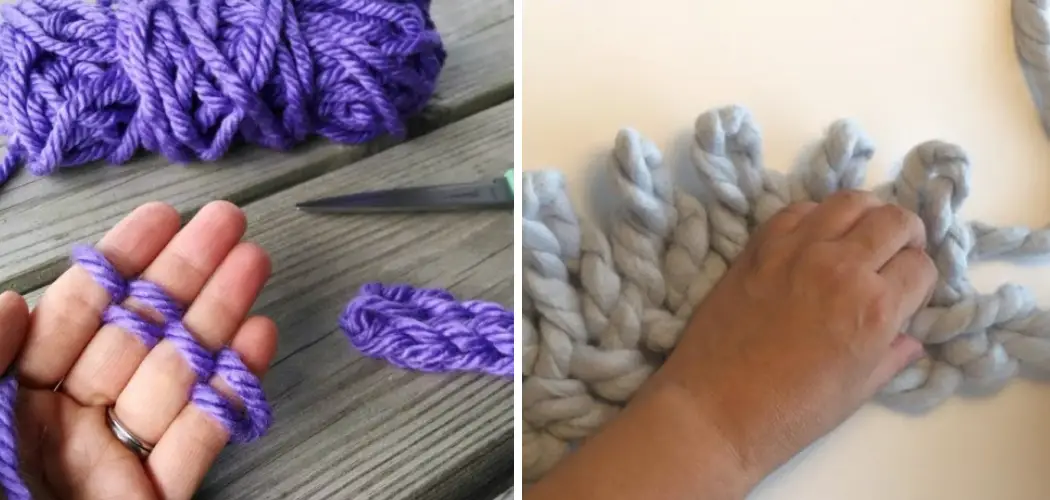Embarking on the world of knitting without traditional needles opens up a realm of creative possibilities and flexibility. Whether you’re an absolute beginner or a seasoned knitter looking to explore new techniques, the art of knitting without needles introduces a unique and portable approach to the craft.

In this guide, we will delve into the innovative methods of finger knitting, loom knitting, or arm knitting, providing a step-by-step exploration of how to knit without knitting needles.
From crafting cozy scarves and blankets to fashioning stylish accessories, this article offers insights into the diverse projects you can undertake without the need for traditional knitting needles.
Discover the joy of creating textiles using your hands, fingers, or specially designed tools, and unleash your imagination as you knit without boundaries. Whether you’re seeking a relaxing pastime or a dynamic way to express your creativity, knitting without needles offers a delightful journey into the world of tactile and needle-free craftsmanship.
Understanding Yarn Weight and Texture
Yarn is an essential component in knitting, and it comes in a variety of weights and textures. Each type of yarn has its unique characteristics that affect the final outcome of your knitted project. In this section, we will discuss the different yarn weights and textures that you can choose from when embarking on a knitting project.
Yarn Weight
The weight of the yarn refers to its thickness, and it is usually categorized into seven main categories – lace, super fine, fine, light, medium, bulky, and super bulky. The weight of the yarn determines how your final project will look like. Let’s take a closer look at each category:
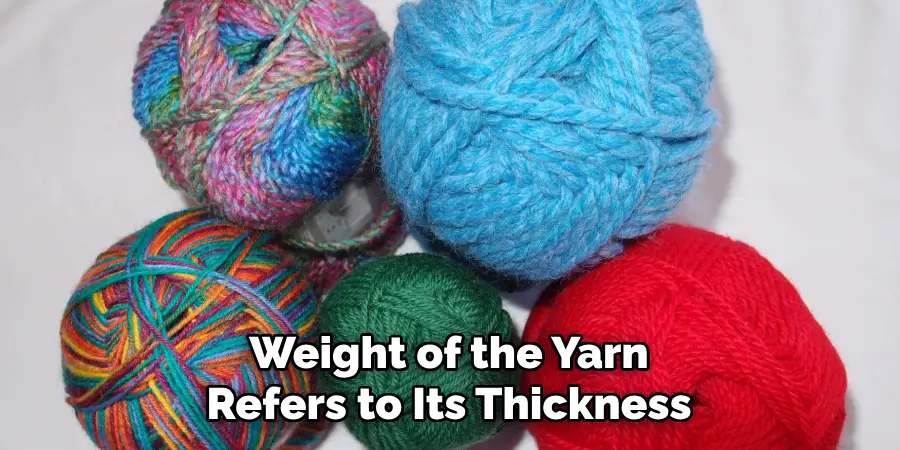
- Lace: This is the thinnest category of yarn and is often used for delicate and intricate projects such as shawls or fine garments. It is usually knitted using small needles, resulting in a delicate and airy fabric.
- Super Fine: Slightly thicker than lace yarn, super fine yarn is often used for lightweight clothing items such as socks or gloves. It is also suitable for making baby clothes due to its soft and gentle texture.
- Fine: This category is slightly thicker than super fine yarn and is commonly used for making lightweight sweaters, scarves, and hats. It can be knitted using smaller needles for a tighter fabric or larger needles for a looser one.
- Light: Also known as DK (double knitting) weight, this category of yarn is perfect for making garments that require a bit more warmth such as cardigans or light-weight blankets. It is also suitable for making toys and accessories.
- Medium: This is the most commonly used yarn weight, also known as worsted or aran weight. It is versatile and can be used for a wide range of projects, from clothing to homeware items such as throw blankets and cushion covers. It is usually knitted using medium-sized needles.
- Bulky: As the name suggests, bulky yarn is thick and perfect for creating warm and cozy items such as hats, scarves, and blankets. It is often used with larger needles to create a chunky texture.
- Super Bulky: The thickest category of yarn, super bulky is ideal for quick projects like chunky blankets, scarves, and cowls. It is usually knitted using large needles to create a bold and textured fabric.
Yarn Texture
Apart from weight, yarn also comes in various textures that can add interest and dimension to your knitting projects. Some common yarn textures include:
- Smooth: This type of yarn has a flat surface and is often used for creating neat and uniform stitches.
- Tweed: Tweed yarn contains flecks of different colored fibers, giving it a speckled appearance. It is perfect for adding texture to your projects.
- Bouclé: This yarn has loops or curls that give it a textured look. It is excellent for creating cozy and fluffy garments.
- Chenille: Made from short, velvety fibers, chenille yarn has a soft and plush texture. It is perfect for making baby clothes and blankets.
- Eyelash: As the name suggests, this yarn has thin strands that resemble eyelashes. It can add a fun and playful element to your projects.

Understanding the weight and texture of yarn is essential in knitting without needles as it allows you to choose the perfect yarn for your project and achieve the desired results.
10 Methods How to Knit without Knitting Needles
1. Finger Knitting
Finger knitting is a great way to learn how to knit without needles. It is an easy technique that can be used to make a variety of items, such as scarves, blankets, and even sweaters. To finger knit, you simply loop the yarn around your fingers in a specific pattern and then pull the loops through each other to create a knitted fabric. This method is perfect for beginners who want to learn how to knit without needles.
2. Arm Knitting
Arm knitting is another great way to learn how to knit without needles. This method involves wrapping the yarn around your arms and using them as giant knitting needles. You can use this technique to make scarves, blankets, and other items with bulky yarns or multiple strands of thinner yarns held together.
3. Crochet Hooks
Crochet hooks are often used in place of traditional knitting needles when working with smaller projects such as hats or socks. They are also great for creating lacy patterns or for adding texture to a project. To use crochet hooks instead of knitting needles, simply wrap the yarn around the hook and pull it through loops on the hook until you have created your desired stitch pattern.
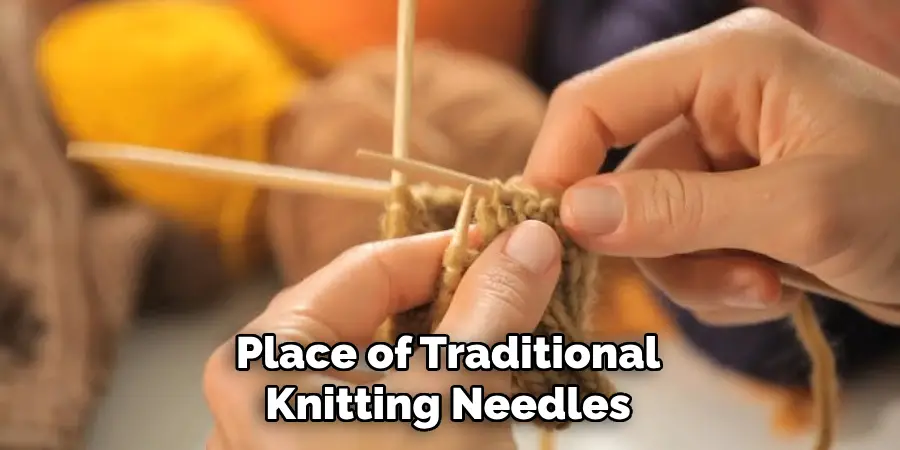
4. Hair Combs
Hair combs can also be used as makeshift knitting needles when working with small projects such as hats or socks. To use them, simply slide one end of the comb into a stitch on your project and then use the other end of the comb-like you would a traditional needle by wrapping the yarn around it and pulling it through loops on the comb until you have created your desired stitch pattern.
5. Forks
Forks are another great tool for learning how to knit without needles because they have two prongs that act like two separate knitting needles at once! To use forks instead of traditional knitting needles, simply slide one prong into a stitch on your project and then wrap the yarn around both prongs before pulling it through loops on both prongs simultaneously until you have created your desired stitch pattern.
6. Paperclips
Paperclips are an excellent tool for learning how to knit without needles because they are thin enough that they can fit into most stitches but strong enough that they won’t bend easily while in use!
To use paperclips instead of traditional knitting needles, simply slide one end of the paperclip into a stitch on your project and then wrap the yarn around both ends before pulling it through loops on both ends simultaneously until you have created your desired stitch pattern.
7. Pencils
Pencils are another great tool for learning how to knit without needles because their shape makes them easier to hold than regular straight-edged tools such as hair combs or forks! To use pencils instead of traditional knitting needles, simply slide one end of the pencil into a stitch on your project and then wrap the yarn around both sides before pulling it through loops on both sides simultaneously until you have created your desired stitch pattern.
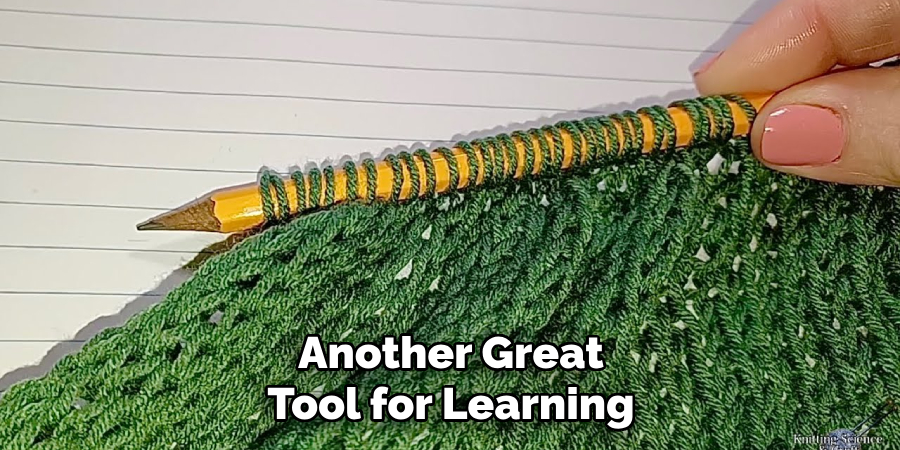
8. Bamboo Skewers
Bamboo skewers are perfect for creating small projects such as hats or socks because their shape allows them to fit easily into tight stitches! To use bamboo skewers instead of traditional knitting needles, simply slide one end of the skewer into a stitch on your project and then wrap the yarn around both sides before pulling it through loops on both sides simultaneously until you have created your desired stitch pattern.
9. Loom Knitting
Loom knitting is another great way to learn how to knit without using any type of needle at all! Loom knitting involves using special looms that come with pegs which act like individual “needles” that allow you to create knitted fabrics quickly and easily without having any prior experience with needlework techniques.
10. Yarn Braiding
Yarn braiding is an ancient form of weaving that has been used for centuries by many cultures across different parts of the world! It involves taking three strands of yarn (or more) and braiding them together in order to create knitted fabrics quickly and easily without having any prior experience with needlework techniques.
Common Mistakes to Avoid When Crocheting
Crocheting is a popular hobby that involves creating fabric by interlocking loops of yarn, thread, or other materials using a crochet hook. It is often seen as an easier alternative to traditional knitting since it only requires one tool – the crochet hook – rather than two needles.
However, like any new skill, crocheting can be challenging for beginners and even experienced crafters can make mistakes. In this article, we will discuss some common mistakes to avoid when crocheting.
Using the wrong size hook
One of the most common mistakes beginner crocheters make is using the wrong size hook for their project. Each crochet pattern comes with a recommended hook size, but it is important to note that this may vary based on factors such as yarn weight and personal tension.
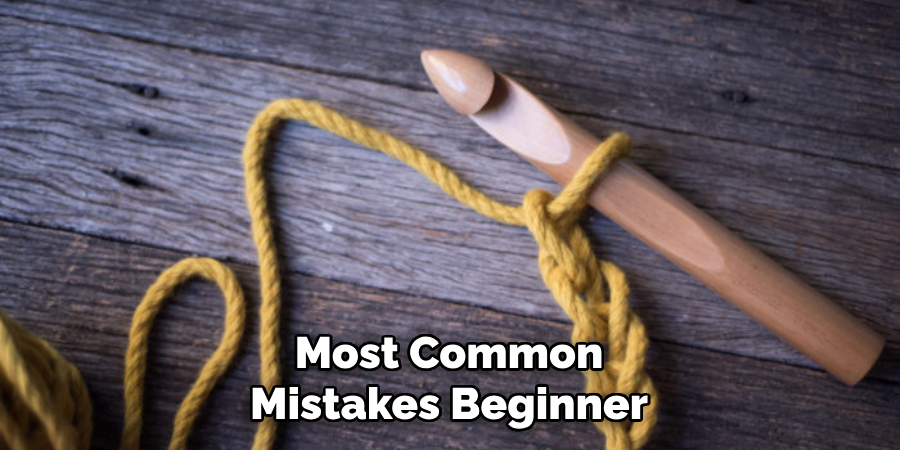
Using a hook that is too small can make your work tight and difficult to maneuver, while using a hook that is too large can result in loose stitches and an overall sloppy look. It’s important to test out different hook sizes before starting your project to find the one that works best for you.
Not counting stitches
Another common mistake is not keeping track of your stitches. It’s easy to lose count, especially when working on a large project, but this can result in uneven or misshapen fabric. To avoid this, it’s helpful to use stitch markers and check your stitch count after each row.
Pulling too tightly
Another mistake that beginner crocheters often make is pulling their yarn too tightly. This can cause your stitches to be tight and difficult to work with, making it challenging to insert your hook into the loops. It’s important to keep a consistent tension throughout your project and not pull too tightly after completing each stitch.
Conclusion
Knitting without needles is a great way to get creative and express yourself! Whether you decide to use chopsticks, your fingers, or something else entirely, the options are limitless. Not only will you be creating something special with your own hands, but you’ll also end up with a treasured item that will last a lifetime.
So go ahead and challenge yourself by trying out knitting without needles today – it’s sure to be both rewarding and enjoyable! Who knows? You might even discover a new hobby that you love! And if at any point you find yourself needing help, don’t hesitate to reach out to the experienced knitters in the community who can provide valuable advice on how to knit without knitting needles.
Expertise:
Crafting expert with a focus on innovative techniques and diverse materials.
Specialization:
- Textile arts (weaving, embroidery, and fabric dyeing)
- Woodworking and furniture design
- Mixed media and upcycling projects
Recognition:
- Featured in local art exhibits showcasing innovative craft projects
- Collaborated with community organizations to promote crafting workshops
- Received accolades for contributions to sustainable crafting initiatives
Mission:
- To inspire and empower crafters of all levels to discover their creative potential
- Encourages experimentation and self-expression through hands-on projects

